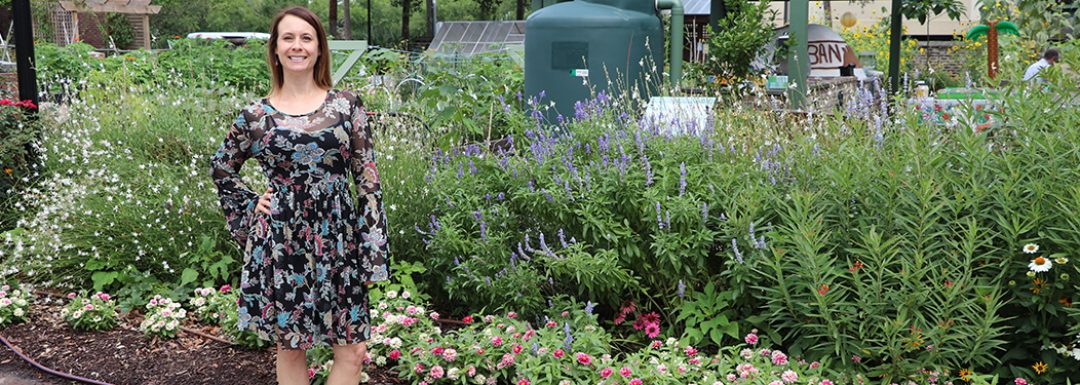Toss Together A Sensational Salad

Training in the Lowcountry can be hot, sweaty and exhausting. The last thing anyone wants to do after a long ride is heat up the kitchen or eat a heavy meal, says Debbie Petitpain, a registered dietitian with Sodexo at the Medical University of South Carolina.
Her solution: incorporating delicious and healthy salads to stay on track.
Salads can be a light and refreshing option – but if you don’t choose the right one, it could derail your training. Take, for example, California Pizza Kitchen’s Waldorf Chicken salad: baby greens topped with grapes, green apples, candied walnuts, crisp celery and Gorgonzola tossed with Dijon balsamic vinaigrette. “You may be surprised to learn that this salad has 22 grams of saturated fat that’s 30 percent of the daily allotment and more than a day’s worth of sodium,” Petitpain says. “It also clocks in at almost 1,300 calories. A 150-pound person would have to bike for more than 25 miles to burn that off.”
She recommends this fool-proof recipe to toss a sensational salad that will provide the nutrition you need to train through the warm weeks ahead in Charleston:
- Start with 2 cups of lettuce
Try a base of dark green lettuces such as romaine lettuce, Boston Bibb, arugula, spinach, green leaf or red leaf lettuce, or any combo of those. At under 10 calories per cup, there is no limit to how much lettuce you can use.
- Start with 2 cups of lettuce
- Top with non‐starchy vegetables
After all, when dietitians think “salad,” they’re thinking “vegetables.” Using a variety of color increases nutrition and interest. Seasonal options include beets, bell peppers, cucumbers, green onions, radishes, summer squash, tomatoes and zucchini, and year-round options include artichoke hearts, bean sprouts, broccoli, cauliflower, carrots, celery, mushrooms, onions and water chestnuts.
- Top with non‐starchy vegetables
- Add one — but just one — serving of fruit
Chopped Granny Smith or red apples, mandarin oranges (canned in juice), sliced strawberries or grape halves are all refreshing additions. However, fresh fruit adds 60 calories for ½ cup, so limit fruit to not more than one serving.
- Add one — but just one — serving of fruit
- A lean protein provides staying power
Just 2 ounces of a non‐fried, lean choice adds about 100 calories and 15 grams of protein. Here are some suggestions: hard-boiled egg; chicken, tuna or salmon from the can (canned in water); beans (garbanzo beans, kidney beans or black beans); grilled chicken or shrimp; fat‐free cheese; roasted turkey or chicken.
- A lean protein provides staying power
- Don’t be fat phobic
Some fat helps you absorb key nutrients and can keep you full for the long haul. Choose plant-based sources for their heart-healthy unsaturated fats. Nuts (pecans, walnuts, almonds), seeds (sunflower, pumpkin), olives and avocado are all good choices as long as the portion is < ¼ cup. Plant-based oils like canola, olive and avocado are good bases for a salad dressing but watch the portion of whatever dressing you choose. Regular dressing is a whopping 50 calories per tablespoon and can quickly give your salad the fat content of a quarter pounder with cheese. Control your portion by using a salad spritzer or measuring spoon. Or put your salad in a Ziplock bag, add one tablespoon of dressing and shake, shake, shake to evenly distribute the dressing.
- Don’t be fat phobic
- Make it a complete meal
Add a whole grain and make this meal complete. This is a great use of leftover grains such as brown rice or quinoa or serve with some whole-grain crackers (like Triscuits) or a small roll.
Finally, Petitpain advises to watch out for the salad toppings that add concentrated doses of saturated fat or sodium: fried meats, deli meats, bacon or bacon bits, regular cheese, crunchy noodles and croutons. The California Pizza Kitchen’s salad goes from “light” to “fright” by overserving the Gorgonzola, crunchy noodles and dressing.
Other Salad Recipes:
Are your delicate lettuces shriveling in the heat still plaguing the South? There are a lot of seasonal options that, with some creativity, make fantastic side salads or can even stand alone.
- Corn – who doesn’t love summer corn? Leftover corn served cold is sweet and crunchy.
Simply cut the corn off the cob, make a dressing of 2-parts plain yogurt to 1-part champagne vinegar and add the secret ingredient: fresh tarragon. This pairs well with grilled steak or black beans.
- Corn – who doesn’t love summer corn? Leftover corn served cold is sweet and crunchy.
- Whole grains are another base for summer salads, and eating them cold is a refreshing twist. Quinoa (pronounced KEEN-wah), brown rice, or wild rice, bulgur, barley — the options are endless.
Use leftover quinoa — which is high in both fiber and protein and cooks up in about 20 minutes — with diced roasted vegetables that you buy in a jar and garnish it with feta. You can really use any leftover grain and vegetables combo like this. I would serve this alongside baked chicken or steamed fish.
- Whole grains are another base for summer salads, and eating them cold is a refreshing twist. Quinoa (pronounced KEEN-wah), brown rice, or wild rice, bulgur, barley — the options are endless.
- Salads like the Nicoise, which is composed of tomatoes, olives, hard-boiled eggs, canned tuna or anchovies, make a great main course. Classically, the Nicoise salad does not include cooked vegetables like potatoes and green beans, but the addition of them can make the salad feel more like a meal.
On a platter, lay out the following chilled ingredients, dress with a balsamic vinaigrette and serve with a crusty baguette:- 2 large, ripe tomatoes, quartered
- 1 small cucumber, peeled, seeded and sliced
- 1 small red onion, peeled and thinly sliced
- 1/2 cup fresh green beans, steamed
- 6 small red potatoes, boiled
- 1/3 cup small black olives
- 3 hard-cooked eggs
- 4 canned artichoke hearts, halved
- 3-4 anchovy filets, cut into thin strips lengthwise, or 6 ounces of tuna
- Salads like the Nicoise, which is composed of tomatoes, olives, hard-boiled eggs, canned tuna or anchovies, make a great main course. Classically, the Nicoise salad does not include cooked vegetables like potatoes and green beans, but the addition of them can make the salad feel more like a meal.
- Fruit salads are the best way to end a meal. Peaches and blueberries pair well or try diced watermelon with fresh mint to end a meal, she says.


